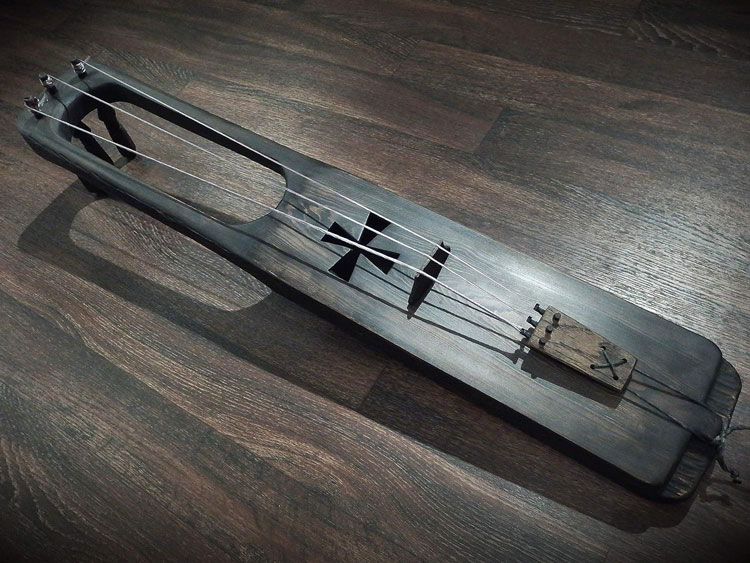The jouhikko is a traditional Finnish and Estonian musical instrument that belongs to the family of bowed lyres. It is also known by other names such as talharpa, tagelharpa, and stråkharpa, although there may be some variations in design and construction depending on the specific instrument and region. The name jouhikko roughly translates to “horse-haired lyre,” as one of its defining characteristics is that the strings are made of horsehair.
During the European Middle Ages, the lyre was often played with a bow. Historical records unveil intriguing evidence of both bowed and plucked lyres in the vicinity of the Baltic Sea. Notably, in the regions of Estonia and Eastern Finland, the bowed lyre, known as the jouhikko, persisted as a cherished musical instrument until the dawn of the 20th century.
Remarkably, as the 20th century drew to a close, the jouhikko tradition experienced a renaissance, breathing new life into this venerable musical art form. This rekindling of interest led to the formation of Jouhiorkesteri, or the Horse-Hair Orchestra, a musical ensemble born in the early years of the third millennium. Comprising members spanning three generations of skilled musicians, Jouhiorkesteri stands as a steadfast guardian of the captivating drone music traditions of Northern Europe.
Pekko Käppi is a Finnish musician who is known for his skillful playing and innovative approach to traditional music. He incorporates blues and world music in his performances, demon string the versatility and expressive capabilities of the jouhikko.
In terms of construction and design, the jouhikko typically consists of a resonating body, a neck, and a set of strings. The resonating body is often made from wood, while the neck can be made from various materials such as wood or bone. The strings of the jouhikko are usually made of horsehair, which gives the instrument its unique sound. The number of strings can vary, but it commonly has three strings.

Playing the jouhikko requires both bowing and fingering techniques. The musician bows the strings with a horsehair bow while simultaneously using their fingers to press down on the strings to change the pitch. Unlike other stringed instruments like the violin or guitar, the jouhikko does not have frets or a fingerboard to guide the player, making it a challenging instrument to master.
The jouhikko produces a distinct and resonant sound that is typically described as textured. It is known for its rich and haunting tones, which make it well-suited for playing traditional Finnish folk music The instrument’s unique sound and expressive capabilities have made it a popular choice among musicians interested in exploring traditional and folk music genres.
(headline image: jouhikko by Shamanic Boutique)



